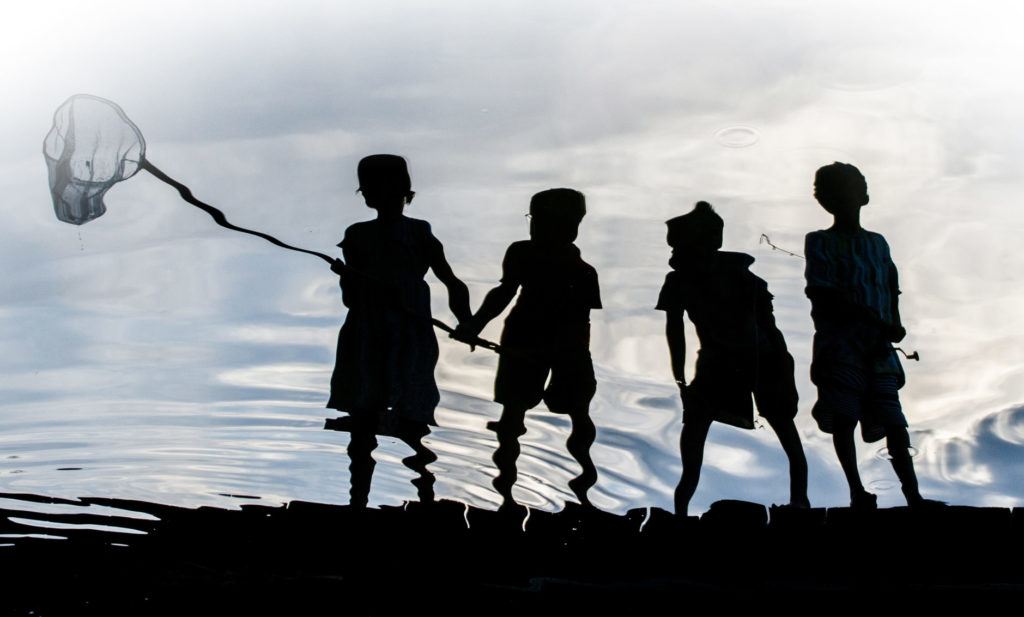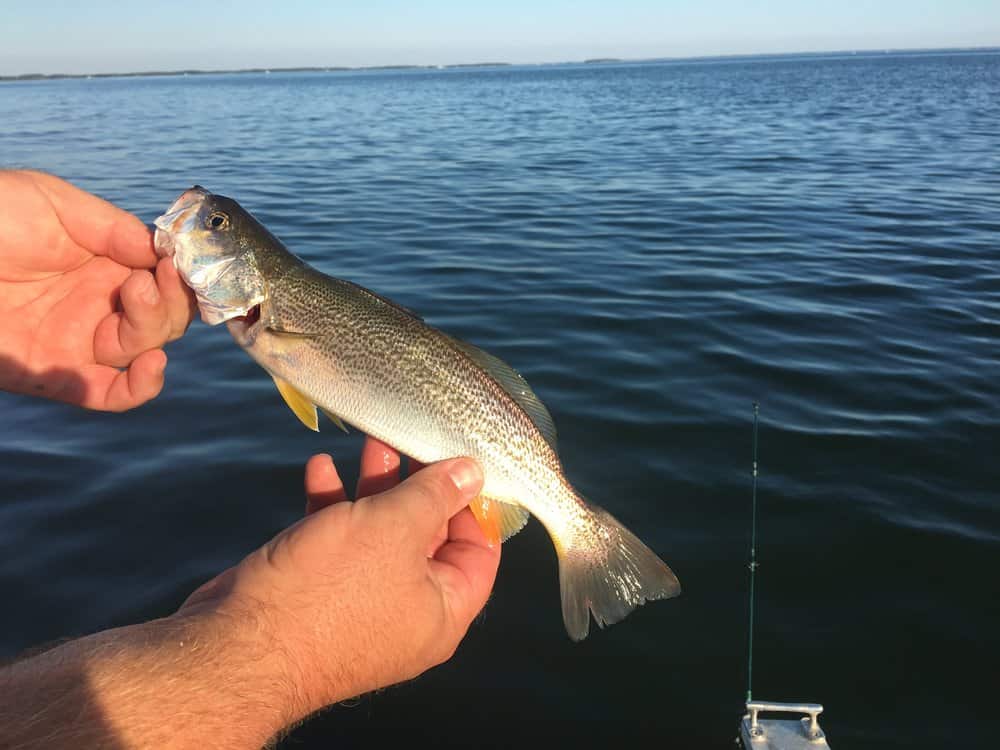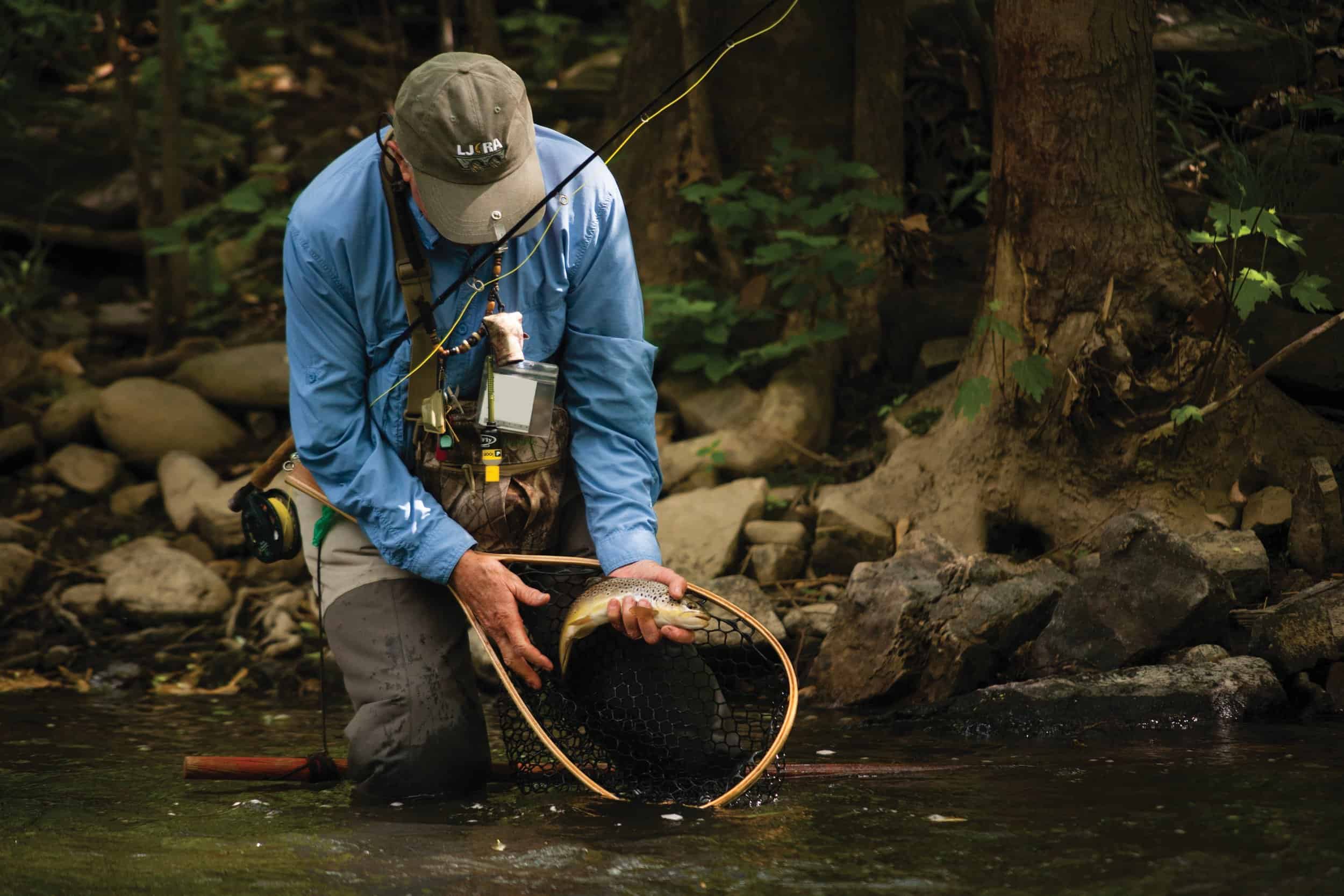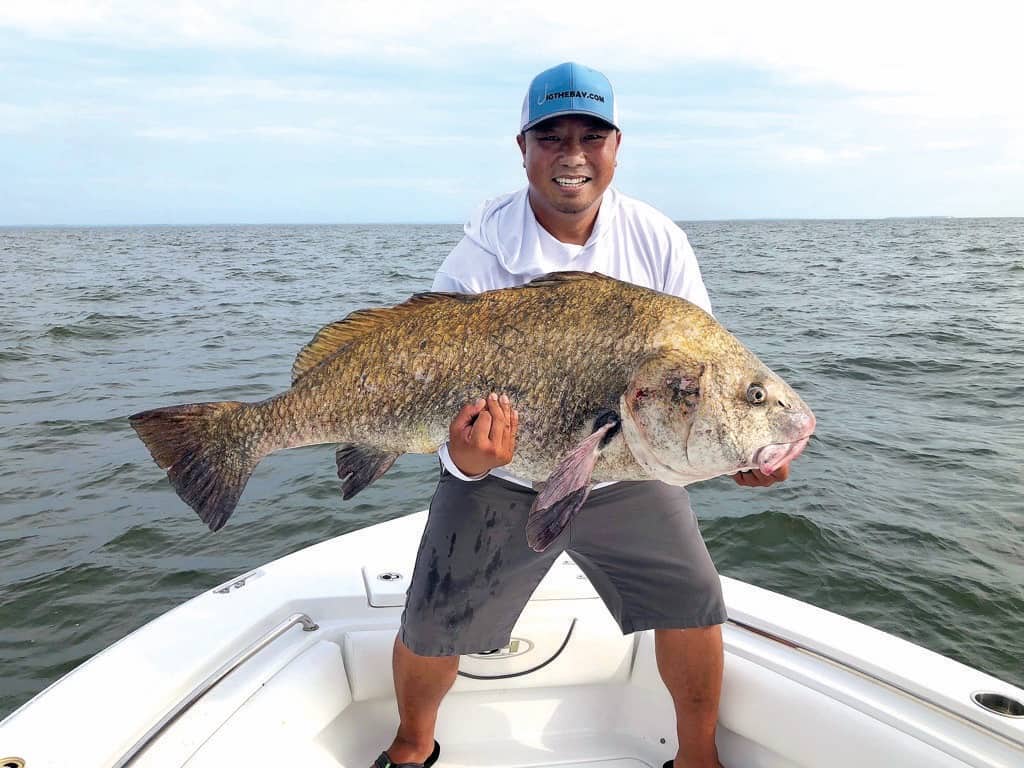Little ones can learn big lessons in conservation when they start early.
(Editor’s note: As we were preparing this issue, the Maryland Department of Natural Resources released the results of its annual winter dredge survey that indicate the lowest abundance of blue crabs in the Chesapeake Bay in decades. It’s more important than ever to teach kids about crabs and why they’re so vital to the health of the Bay, and there’s no better way to introduce them to crabs than to take them out crabbing. As Capt. Chris advises, teach them to take no more male crabs than they need for a good meal, and let all the female crabs go.)
It doesn’t matter how many crabs I’ve caught, each one I’ve dipped is as magical as the first. Fiercely beautiful, their chiseled armor wards against the hardships of life in the Chesapeake. Crabbing at least once is a must if you live along or visit the Chesapeake, and it’s never too early to start teaching this art to the next generation. Below are some tips on that, as well as gear.
A Few Dos & Dont’s of Taking Kids Crabbing
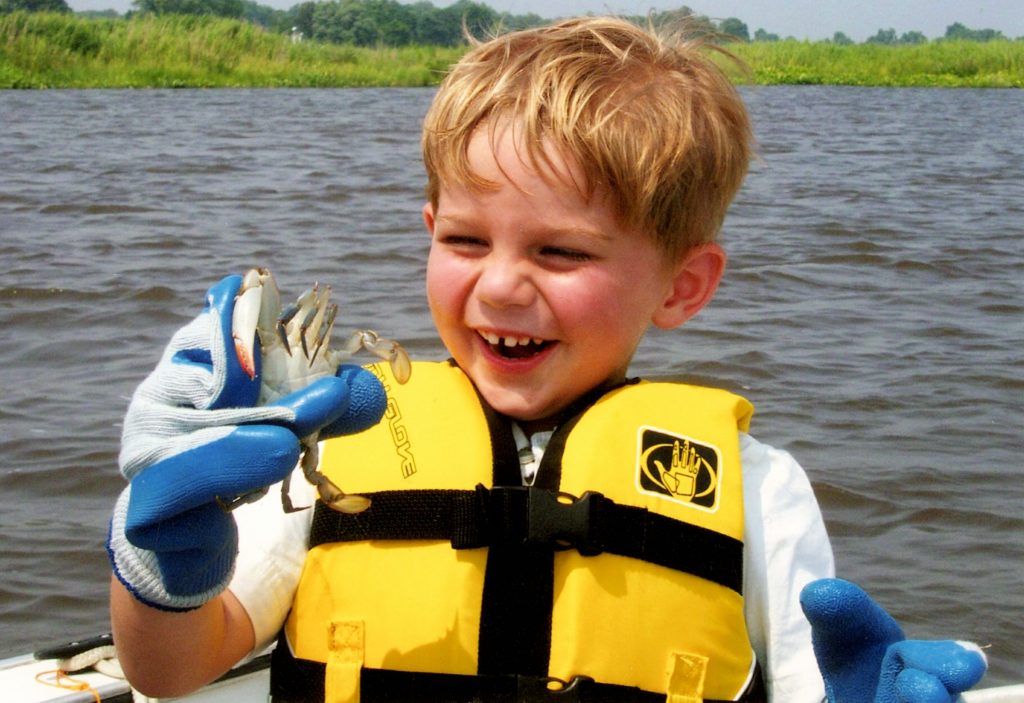
In my many years as an outdoors trip leader and fishing guide I’ve found that youngsters not only want clear direction, they also respect you for providing it. Plan accordingly, yet manage your expectations, especially for young tackers under six years old. Explain the day’s plan. Don’t forget the snacks, drinks and even coloring books to pass the time. And for the real little ones, bring along their favorite toy. Make it a relaxed event, perhaps with swimming or lunch out afterward.
Our first order of business is safety. Start with showing them proper way to wear a life jacket. Then do it again, and then again. Model the behavior. Buy your child, relative or friend’s kid her or his own life jacket. Make sure it fits properly. If it chafes, binds or is too loose, kids will try every trick in the book to weasel out of it.
Get kids involved from the beginning by letting them (if they’re old enough) help set the gear. If you’re on a boat, show them your helm station and electronics and explain how each works. Of course, the funnest part of the whole experience is scooping up the crabs.
The best way to prime the pump for future trips is to crab where your odds of catching crabs are high. A first-time crabber cares little the size of the critter—they’re happy as long as things are entertaining. Also, don’t overcomplicate things. Time management is key. Nothing sucks the fun out of crabbing more quickly than if it’s too boring, too hot or both. You’ll not only get a cranky kid, but they may develop an aversion to it. Two hours tops for first timers is plenty.
Have a back-up plan ready to go. Remember, there’s a chance you may get skunked. If you’re near a beach, walk the shallows with a few dip nets and, if you’re more adventurous, pull a seine net. Minnows, crabs and other Bay critters are usually easy to catch and a hoot for youngsters.
Most importantly, make it fun. Remember, it’s just crabbing. If the youngster in your life isn’t into the outdoors, give them time. Chances are they’ll come around eventually to enjoy the Bay, too. Forcing your passions onto them rarely works, if ever.
Gearing Up
Like sport fishing, recreational crabbers run the gamut in terms of gear. Let’s start with the basics. The simplest method is a hand line. You can easily make one using a fishing sinker, thin line nylon or cotton string, and “handles” cut from a simple pool noodle. Commercially made “throw lines” are triangles of wire with a weight molded to each; they look like super-sized safety pins, with the pin end used to spike the bait (usually chicken necks or fish heads). Rig at least a half-dozen per kid or risk mutiny. When a crab is on the line, a slow, steady retrieve is key.
Collapsible traps, also called snap pots, are a good choice when crabbing with young kids (or newbies). Snap pots come in a few different configurations: four-paneled vinyl collapsible crab traps, the star style, and the crab rings measure. You can fish them from a small boat or dock. A couple dozen traps is about the right number. Vary the depth you set them, and swap out bait when it becomes washed out.
If you want to get serious, run a trotline. You can make one yourself (thanks, YouTube) or buy them pre-rigged. Expect to pay a pretty penny if you choose the latter route. Three-strand nylon line is standard today. (Does anyone under 50 years old even know what tarred sisal is?) Most trotliners today use snooded trotline, which are short (six inches) sections of bungy cord attached to the mainline about six feet apart. At the business end of the snood, you can either go with an onion bag or insert bait—chicken necks (cheapest), salted eel, or bull lips—directly into the loop. If you go with onion bags, razor clams are great, but also the most expensive and time-consuming method. Novices wonder why the crabs hang on to the bait. It’s simple: Being greedy suckers, they hang on like Charlie Sheen back in the day at the end of a party.
Each end of the main line is attached to a two-foot run of chain that you attach to a float or buoy with a snap swivel. Down from the buoy runs an anchor line. It’s better to have too much anchor rode than too little. The anchors can be old sash weights, flywheels or other engine parts, or mushroom-style anchors heavy enough to hold bottom in a good current. Avoid fluke anchors.
Next you’ll need a roller arm, which attaches to the boat and extends across the gunwale (or wash board) over the water to allow the trotline to roll across it. You can purchase one, or fashion one out of PVC or metal.
Other standard gear includes a dipnet, two or three bushel baskets with lids to hold crabs, a culling stick to measure the crabs’ size, a set of tongs, heavy-duty canvas or rubberized gloves and a second set of tongs for when you drop the first pair overboard. Also, make sure you check your state’s regulations for size limits, seasons and other rules. They change.
Finally, there’s no substitute for time on the water. The Bay is the best place to learn about the mystical rhythm of crabs. Take a page from the late state Senator Bernie Fowler and slap on a pair of old sneakers and wade a grass flat with a roller net. Among the last of our wild places, a walk among the sea grass meadows inspires peaceful reflection. We certainly can use more of that these days.
There’s no substitute for time on the water. The Bay is the best place to learn about the mystical rhythm of crabs.
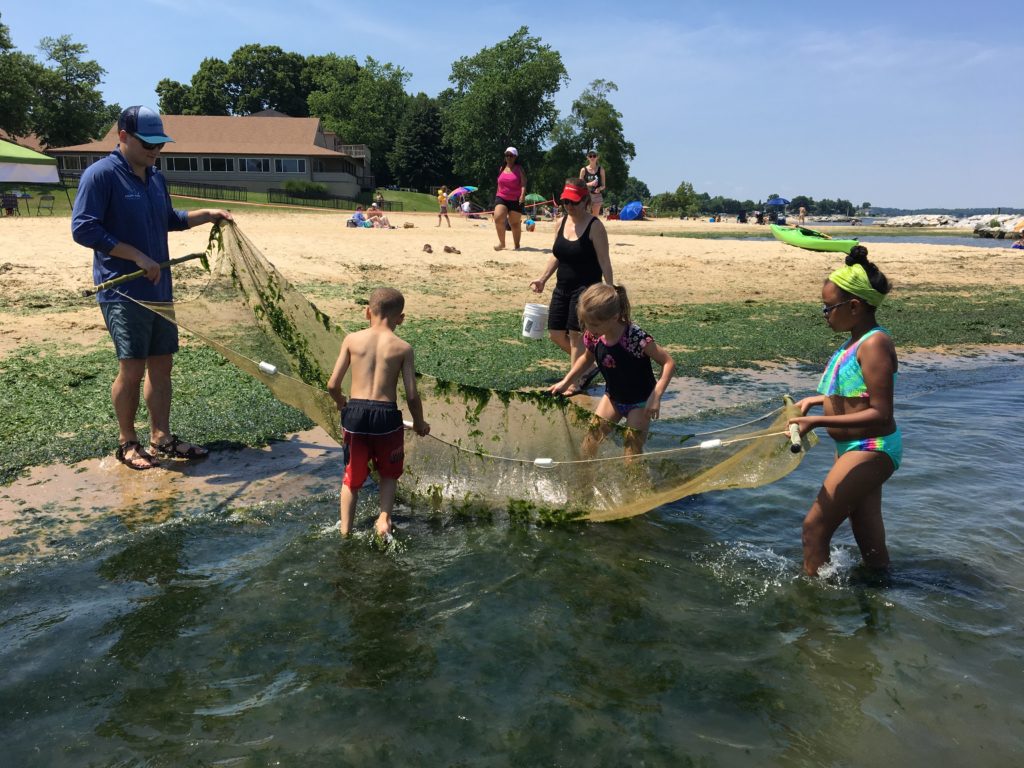
(EDITOR’S NOTE: Based on the dismal results of the winter dredge survey, the Maryland Department of Natural Resources may cut the 2022 crabbing season short or reduce catch limits to ensure the fishery remains sustainable. Check dnr.maryland.gov for updates.)

